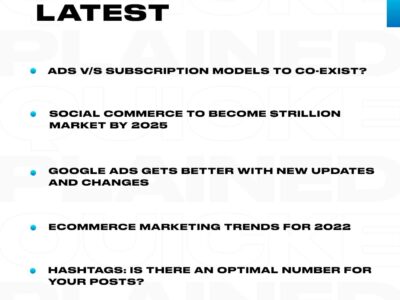Content automation involves putting content creation and content marketing on autopilot.
The parts of content marketing or content creation on autopilot are usually repetitive. They are automated using tools and applications. Content automation is useful in the following aspects of content creation:
- Topic suggestion
- Content generation
- Proofreading content
- Content personalization
- SEO recommendation
- Updating of content
The process uses artificial intelligence (AI) for the above. Let’s look at them in detail.
Topic suggestion
Coming up with relevant, useful topics to write on is time-consuming. Google Search Console can define the level of interest in a topic and measure how current content satisfies that interest.
Word embedding is a Natural Language Processing (NLP) technique. It helps in content creation by suggesting topics to create content on.
Content generation
NLP and natural language generation technologies can speed up content creation.
Content creation bots can create text, images, and sound. Yet, they are still to match the emotive depth in human-written articles.
Proofreading content
Grammarly is a superb tool to proofread content and identify errors in grammar and spelling. It also offers stylistic suggestions.Â
Similarly, the Hemingway app offers users tips on making your content more readable.
Content personalization
Content personalization is the future of content creation. Uberflip is one tool that offers automated personalized content experiences.
SEO recommendation
Just like Grammarly is a tool for bettering language, there is a gap in the market for a sophisticated tool for improving SEO.
Various options do exist, like Google Analytics, Yoast, and others.
Updating of content
Auto-updating of content significantly reduces the workload of content producers.
Quark is one tool that does just this.
Content automation and its tools
Content automation is available for the following areas of content creation:
- Text
- Images Â
- Sound
Text
Some tools for content generation of text are:
- Articoolo automates article generation.
- Wordsmith connects with Excel, Word, and Tableau to produce press-ready summaries of the underlying data.
- Quill is another useful content generation service.
Images
- Google has used sentences to generate images in 2017.
- Deep Dream Generator transfers styles between images.
Sound
- If you have ever used the read-aloud feature of a PDF, you know how it simplifies reading.
- Google’s duplex system has humanized mechanized sound reading. It introduces pauses and human-like fillers.
- Some artists claim to compose music using AI.
The advantages of content automation
- It helps to meet regulations
- Improves the experience
- Automates workflow and thus reduces manual mistakes
- Improves content creation efficiency
How to achieve content automation in 7 steps
- Google Alerts and Buzzsumo decide what you want to automate.
- Use DivvyHQ or similar workflow or calendar tools to automate stage, status, and process content creation.
- Use Hootsuite to share content across social media. You could also use Sprout Social or Buffer for this.
- Use paid content marketing tools like Zemanta to automate content marketing.
- Mailchimp automates your newsletter.
- Use Zapier to connect various content marketing platforms.
- Google Analytics can measure the success of content marketing efforts.
Elements of content automation
- The right marketing automation software
- Website optimization
- Connecting personally with users
- Create triggered responses using the content automation software
- Use the A/B split testing of your content automation software.
- Establishing key metrics for identifying and scoring leads
- Editorial calendar using calendaring apps like Gmail
- Progressive profiling of prospects
- Tailoring email elements to usersÂ
- Continuous monitoring and measuring results using your analytics software
- Scheduling and linking posts to social media accounts
- Tracking campaign successes
- Maintaining client relationships
Some notable content automation tools for content marketing
- Pardot
- Eloqua
- Marketo
- HubSpot
- Autopilot
- Act-On
- InBoundio
Notable Content Marketing Statistics
- Aberdeen Groups Research (2012) shows the following data. Companies that use marketing automation show 53% higher conversions and 3.1% higher revenue growth.
- Pardot users showed a boost in sales of 34% after using content marketing automation.
- Annuitas Group showed 451% growth in qualified leads in businesses using marketing automation.
- Gartner showed that companies that automate lead management showed a 10% revenue increase between six and nine months.
Why you should use content automation
Content automation in content creation and content marketing decreases effort while increasing output.
Content automation is different from automatic content. You need to apply and monitor it carefully.
Content automation should harmoniously mix AI with human effort, and you will see your content marketing bear fruit.








Comments